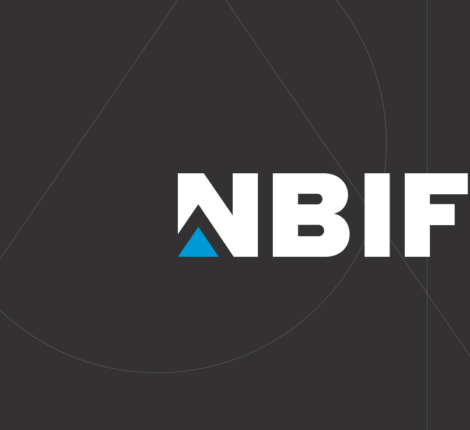- 7 octobre, 2020
- Recherche appliquée
- Comments : 0
Tips for writing a successful NBIF Research Application

Dr. Laura Richard
Director of Research
As a researcher myself, I understand crafting a funding application takes a significant amount of time and effort, and that it is incredibly disappointing when that effort results only in a rejection letter. While I wish that we could fund every application that arrives at NBIF, the reality is that all our programs are oversubscribed, resulting in a competition for the limited money available. Among the proposals we end up turning down, there are often common themes that result in lower scores.
Here are some tips on avoiding pitfalls and writing an application with a high chance of success, thus ensuring you optimize your writing time.
Eligibility
Before you put a word down, you should check that you are eligible for our funding. It pains me to turn away a 20-pg application where the applicant has failed on the first eligibility tests:
- Are you currently holding a valid faculty role at an NB institution? Our award guidelines have more details, but mainly you must be full-time research faculty. Students and postdocs cannot be the principal investigator (though they can draft out the application and lead the project, under the guidance of faculty)
- Can the proposed work be described as applied research or social innovation? Our mandate is clear and focused on research that could have an economic impact in NB, directly or indirectly. If you struggle to see your work in this lens, we are not the funding organization for you.
- Do you have sufficient leverage? Most of our funds have leveraging rules, so make sure you have enough other valid funding sources to satisfy them. Our award guidelines have a lot more information on this, and your institution’s award administrators can help too.
Preparation
As you begin framing up a project idea in your mind, use the following to help shape it:
- Read the evaluation criteria for the fund. For each of our funds, we publish online at www.nbif.ca, the criteria by which we evaluate applications. Reviewers will assign a score against each criterion while reading your application, so for the highest chance of success, you should shape the proposed project around these points. Reviewers can’t give points for anything except these criteria, so it doesn’t matter how great your proposal is in other areas.
- Look at examples of winning projects. We publish news releases and annual reports describing projects we’ve funded – looking through these can give you an idea of the kind of work we support. Speak with researchers at your institution who have secured NBIF funding and see if they can share those applications with you.
- Speak to an NBIF Research team member about your idea before you start writing. Take advantage of the fact that we are a small foundation in a small province and talk to us about your idea before you begin writing. We are always happy to give some quick feedback and help you shape your application around winning points. We can also provide some informal thoughts on relative chances of success, to make sure your time is well spent.
- Inform your institution’s research administration office of your intent to apply. The administrators at NB institutions are very familiar with our funds and process and may offer unique insights and help structure your proposal for success.
Writing
When filling out the application form, your text should address these points:
- Minimize technical jargon. Reviewers with significant research experience will read your application but who are likely not specialists in your field. However, make sure that there is enough relevant detail to appreciate the work’s scientific merit still.
- Include a timeline for the work. A clear timeline with key milestones and anticipated deliverables will give reviewers confidence that you have a well-thought-out plan and can execute the proposed research with excellence.
- Knowledge dissemination plan. The results of your work will need to be shared with a broader audience to drive impact. Who is this audience, and how will you reach them? Even more substantial than just disseminating the final findings would implicate these partners in two-way communication and development during the project.
- Plan for economic impact. Many of our grants ask for details about how the research will have an economic impact for New Brunswick, i.e. how this work will eventually generate money or avoid costs. There are many ways to commercialize research (e.g. contract research, licensing of patents, policy research and creation of a spinout), and the detail available depends on the research stage, so there is no one answer here. Some common themes include: what else exists in this space, and how is this innovation different? Is there a market need for the proposed innovation? What does the fee structure look like? How can you quantify the cost avoidance or impacted groups? It’s OK if the answers are still tentative but show us that you have given this some thought.
- Budget. Do you have reasonable estimations for what it should cost to achieve the proposed research objectives and, therefore, justify the amount requested from the NBIF?
Final review
Think you’re finished? Take a few moments to review your proposal before submitting:
- Look back over the evaluation criteria. Have you addressed all the criteria and made it easy for the reviewer to see how your proposal satisfies them?
- Is the application written clearly? Applications that are well written and can describe their scope, objectives, and methods clearly and in plain language allow reviewers to focus on the application’s content and generally receive higher marks. If in doubt, ask someone to read over it for you. Make sure the critical information is in the main application and not the attachments/ hyperlinks as reviewers have limited time to look at these.
One thing that doesn’t affect your chance of success is your choice of language. Our reviewers can handle applications in either French or English and will treat them the same way.
Following these tips will help you to create an NBIF funding application that is destined for success.



